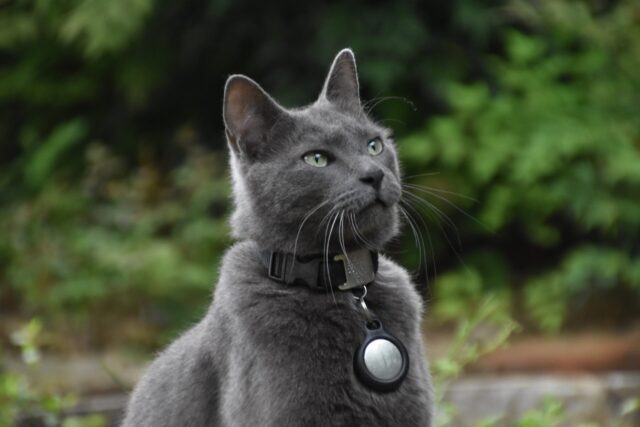One of our biggest fears as cat owners is our beloved pets getting lost. How many times have you had close calls? Your kitty squeezed out of an open window or through the door when you came inside – so many different things can happen unexpectedly.
In fact, it’s estimated that 1 in 3 pets will become lost in their lifetime. Remember, because they are accidents, never really prepare for them. So the best thing we can do is to be prepared for that time our cat does get away. How do we do that? We provide ID tags and microchips!

Arm Your Cat with a Collar & ID Tag
The most common and basic form of identification for our pets is a simple collar and ID tag. The tag should have your pet’s name and at least one phone number of someone that can be reached in the event of an emergency. Having your address is helpful, but since you may be away a phone number is essential. If you have a blind, deaf, or very shy cat, he may be difficult to catch. So it’s always helpful to have that noted on his collar or ID tag as well. Becoming lost is scary for any cat, but if they have a disability, it might be even more frightening. The idea is to help get your kitty back to safety while keeping the Good Samaritans safe as well.
Microchipping
Recently, more and more pet owners are turning to microchips as a form of identification. Since it’s sometimes not practical or even safe for cats to be wearing collars and tags (collars can get caught and choke unsupervised pets), microchips are the perfect solution. Since they’re implanted in the skin of the cat, they are always there. There’s no need to worry about whether or not your kitty has his collar on if he ever escapes. Microchips can be implanted when our cats are kittens, and it really is almost painless. Just a quick injection and your feline friend is good to go for life.
Most microchip companies even offer international numbers so you can easily cross borders. This makes traveling with your pet a lot safer. As long as you send off your payment and updated information to the microchip company, all your cat needs to do is be scanned for the ID number to show up. This will give the shelter, veterinarian, or Good Samaritan an idea of what company to contact. This company will, in turn, contact you, and you’ll be quickly reunited with your poor kitty! Just remember that if you ever move or change your phone number, you’ll need to update that information with the microchip company.

So remember, having some sort of identification on our cats is essential. The chances of our pets getting lost even once are fairly high, and we need to make sure we are doing everything we can in order for them to be returned to us. With overcrowded shelters, it’s not likely that your pet is re-adopted. And even if he is, he’s still your cat! You can never be too prepared, and you just never know when that day might come when your beloved pet goes missing.

